Artist Spotlight
New Dancer Spotlight: Josiah Kauffman
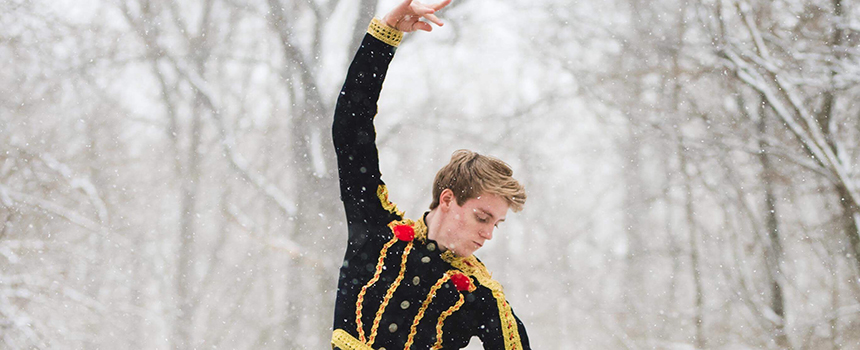
 Josiah Kauffman, PBT’s sixth new dancer for 2019-2020, didn’t have an easy path to his professional career. But it was injury that cemented ballet as his passion. Get to know Josiah:
Josiah Kauffman, PBT’s sixth new dancer for 2019-2020, didn’t have an easy path to his professional career. But it was injury that cemented ballet as his passion. Get to know Josiah:
Fun Facts
Hometown: Belgrade, Montana
Family: “I have a dad and mom, a little brother and a little sister, a pug, and a cat. I love them all and I miss them a lot.”
Pre-performance ritual: “I spend some time in prayer and listen to music to get me pumped.”
Hobbies: “I love playing all sorts of instruments (guitar and mandolin). I also really enjoy playing chess.”
Favorite food: “Cheeseburgers!”
Favorite musician/song: “Rend Collective.”
Ultimate dream role: “Spartacus!”
Favorite role to date: “I got to play Basilio in Don Quixote at my school in Indiana this last spring.”
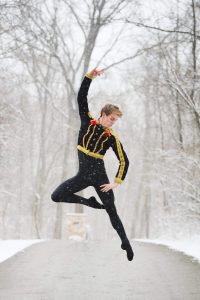 Q&A
Q&A
How do you think you’ve grown as an artist during your training? How has it prepared you for a professional position?
“My teachers, [former PBT dancer] Robert Moore and Pollyana Ribeiro really emphasized dancing with artistry instead of just doing the steps for the steps. Growing up in a competition studio in my earlier years, I always thought choreography had to be trick-heavy and explosive to impress an audience. After switching to classical ballet, I learned that putting my heart and soul into choreography can be a lot more moving than just pulling off heavy tricks.”
Describe your ballet “epiphany” – the moment you knew this was what you wanted to do professionally.
“When I was 14 years old, I had a medical scare. The doctors told me I had fractured my C-4 vertebrae and I could be paralyzed from the neck down with too much movement – dancing was pretty much off the table. Being faced with the possibility of never dancing again, I realized what a crucial part of my life it was. Thankfully, they found that I only had a minor fracture and was able to continue my training.”
What are some of your personal goals for your first season as a company dancer?
“My goal is to grow more as a dancer and a performer.”
What’s the most fulfilling thing about being a ballet dancer?
“Striving for perfection is the most fulfilling thing for me. I like a challenge.”
What are you most looking forward to next season?
“Being able to dance and perform with professionals on a regular basis is something I am really looking forward to and I’m excited to see more growth in my abilities.”
If I wasn’t a ballet dancer, I would be…
“I like to work with my hands, so I’d probably build houses or do something with music.”
New Dancer Spotlight: Erin Casale
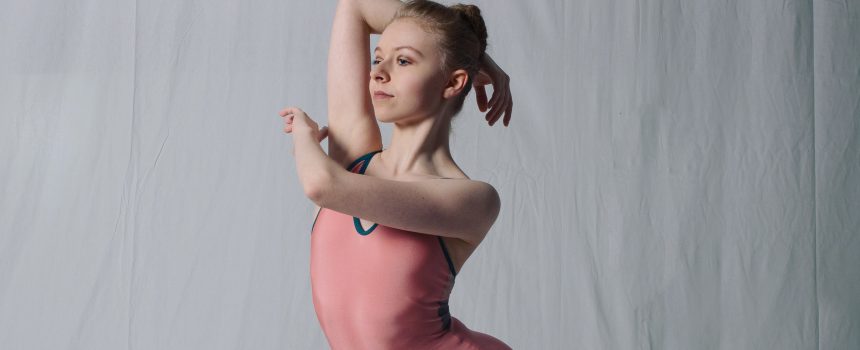
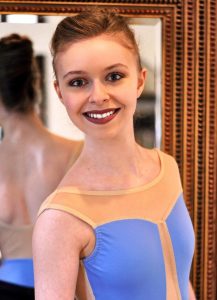 Fresh from Pittsburgh Ballet Theatre School’s graduate program, Erin Casale is one of six new company members joining PBT for its 50th Anniversary Season in 2019-2020. Learn how Erin gets ready for a performance, what her ultimate dream role is and what she’s hoping to accomplish during her first year as a professional dancer here:
Fresh from Pittsburgh Ballet Theatre School’s graduate program, Erin Casale is one of six new company members joining PBT for its 50th Anniversary Season in 2019-2020. Learn how Erin gets ready for a performance, what her ultimate dream role is and what she’s hoping to accomplish during her first year as a professional dancer here:
Fun Facts
Hometown: Johnstown, Pennsylvania
Family: “I’m the oldest child out of three. I have a younger sister and a younger brother. My mother and father are super supportive and I wouldn’t be where I am without them.”
Pre-performance ritual: “I usually try to get to the theater pretty early so I don’t have to rush myself at any point while getting ready. I always listen to Billy Joel to get me pumped up and ready to go.”
Hobbies: “I really enjoy sewing and cross stitching. I like trying new crafts and projects too! I also have a few betta fish that I really enjoy taking care of.”
Favorite food: “Any Chinese food, really, but vegetable lo mein is my absolute favorite!”
Favorite musician/song: “‘Don’t Stop Me Now’ by Queen”
Ultimate dream role: ” I would love to perform Juliet or Cinderella.“
Favorite role to date: “It’s hard to choose between performing the first movement of Western Symphony or Raymonda.“
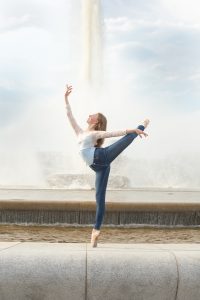 Q&A
Q&A
How do you think you’ve grown as an artist during your training? How has it prepared you for a professional position?
“I was fortunate enough to work with the company during both my years in the graduate program, which gave me the opportunity to really feel what it’s like to work with the company. It was also a big test for me to see whether I was able to handle the pressure and if I was good enough to make it in this industry.”
Describe your ballet “epiphany” – the moment you knew this was what you wanted to do professionally.
“Growing up in Johnstown, there wasn’t a lot of opportunities to go and watch ballet, so my mom started taking me to see Pittsburgh Ballet Theatre’s productions. When my family moved to Washington D.C., I was able to attend PBT’s five-week summer program, and that was when it really clicked. My dream was to dance with PBT and now I’m very fortunate to say that I am.”
What are some of your personal goals for your first season as a company dancer?
“I definitely want to continue working on cleaning my technique. I also want to step out of my comfort zone and learn as much as I can from other dancers. There are so many different dancers and it’s fascinating to see how everyone approaches each role.”
What’s the most fulfilling thing about being a ballet dancer?
“Ballet has always been a part of me. It lets me escape reality and explore different characters. I could be having a hard time in the studio with some of the rehearsals, but performing just has that magical quality to it. That fear just disappears and I feel free.”
What are you most looking forward to dancing next season?
“Definitely Balanchine & Tchaikovsky and Giselle.”
If I wasn’t a ballet dancer, I would be…
“Criminal psychologist or profiler. I’m super into true crime and I find it absolutely fascinating!”
New Dancer Spotlight: Grace Rookstool
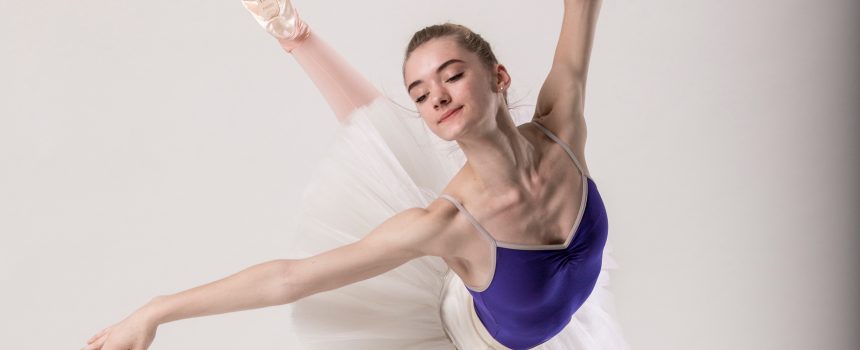
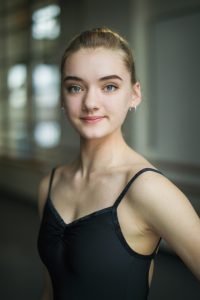
Grace Rookstool is part of the new cohort of PBT dancers hired by Artistic Director Terrence S. Orr for the company’s 50th Anniversary Season in 2019-2020. Grace’s passion for dance started early and runs deep, from watching her older sisters practice ballet to taking the stage herself. In fact, the dancers among her family of 10 have racked up over 350 performances of The Nutcracker, between them. Learn more about one of PBT’s newest company members here:
Fun Facts
Hometown: Langley, Washington
Family: “I come from a family of 10 kids. I’m number 7 in the line-up.”
Pre-performance ritual: “I like to get there in plenty of time to get myself ready, and to get pumped up and excited for the show.”
Hobbies: “Baking, going for walks and playing around on the piano.”
Favorite food: “Ice cream.”
Favorite musician/song: “I don’t have an absolute favorite. I like everything from Billie Eilish to Queen to Frank Sinatra.”
Ultimate dream role: “Odette/Odile.“
Favorite role to date: “A Meditation, Pas de Deux, choreographed by Cecilia Iliesu for the PNB Next Step program. It was my first pas on stage and I got to do it with someone I was close with.“
 Q&A
Q&A
How do you think you’ve grown as an artist during your training? How has it prepared you for a professional position?
“I started ballet when I was 3 years old. I’ve been learning technique for as long as I can remember, but learning to express myself as an artist on stage for an audience – or even just in class for myself – has helped me to grow so much over the years. All of the training I’ve received over the years, whether it be in technique or artistry, has been part of showing me what it means to be a professional dancer. It taught me to want to be in any role and to always be ready to jump in at the last minute and express myself to the fullest.”
Describe your ballet “epiphany” – the moment you knew this was what you wanted to do professionally.
“My ‘moment’ when I knew I wanted this more than anything – to become a ballerina – had to be the first time I saw George Balanchine’s Jewels. I was 9 years old and was lucky enough to see Carla Korbes and Karel Cruz perform the Diamonds Pas de Deux together. It was such an amazing performance, it made me want to reach those heights as an artist, which is exactly what I set out to do after that show.”
What are some of your personal goals for your first season as a company dancer?
“For the upcoming season I plan to give 110 percent to each and every opportunity I am given. I also plan to keep on growing as a technician and an artist, and to push forward to new heights for both the audience and myself.”
What’s the most fulfilling thing about being a ballet dancer?
“I would have to say the most fulfilling thing about being a ballet dancer is getting past all the hard work we do in the studios and putting our performances on stage to connect with the audience.”
What are you most looking forward to dancing next season?
“The most exciting thing I’m looking forward to this upcoming season is to finally be a member of a professional ballet company, and taking my passion and making it my career. Not only that, but becoming acquainted with a whole new corner of the ballet world, including artistic staff, coworkers, new friends, etc.”
If I wasn’t a ballet dancer, I would be…
“If I never had my ‘epiphany moment’ in ballet and didn’t become a professional ballet dancer, I think I’d be involved in missionary work or other endeavors reaching out to help the underprivileged, or those affected by natural disasters. I would want to be involved in helping make the world a better place.”
Artist Spotlight: Meet Our Newest Soloist
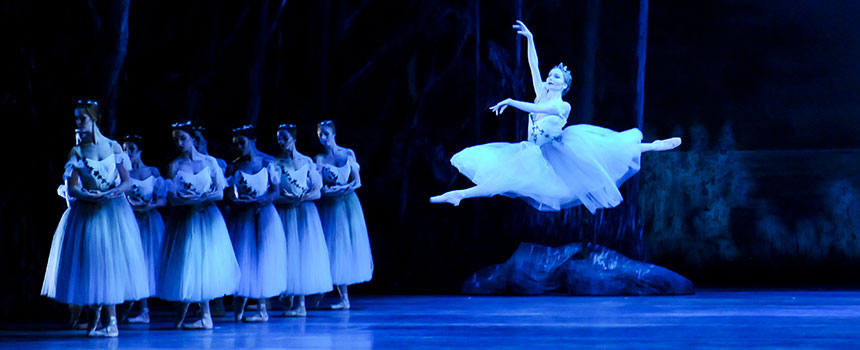
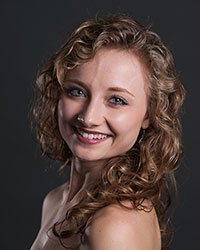
When Diana Yohe next steps on stage, it will be as a Pittsburgh Ballet Theatre soloist. Yohe, an alumna of the PBT School Graduate program, joined the company in 2013 as a member of the Corps de Ballet. Over her four seasons with PBT, she has danced an increasing number of featured roles, including Myrtha in PBT’s October production of Giselle and Alice in its February production of Alice in Wonderland. She’s also racked up an impressive number of contemporary credits ranging from Jiří Kylián’s Petite Mort and Sinfonietta to William Forsythe’s In the Middle, Somewhat Elevated, Twyla Tharp’s In the Upper Room and James Kudelka’s The Man in Black. Diana trained under Courtney Laves and Mark Otloski at the City Ballet of Cleveland before pursuing pre-professional training in Joffrey Ballet’s Trainee Program and in PBT School’s Graduate Program, which she joined in 2012. Get to know Diana here.
Fun Facts
Family: I have the most incredible support system. They come to every show, sometimes multiple times. They are the most wonderful people.
Pre-performance Ritual: I don’t have a specific routine, but I always say a quick prayer before getting on stage!
Most-played Music Right Now: The most recent CD I bought was Frank Sinatra. I love the old classics.
Hobbies: I am most definitely a book worm. I also love cooking and baking, along with traveling with my fiancé, Joe. He jokes that wedding planning is my new hobby!
Dream Role: My dream classical role would be Giselle. Otherwise I’d have to say that performing the pas de deux from After the Rain will always be a dream of mine!
Favorite Role to Date: Myrtha from Giselle. I thoroughly enjoyed exploring her character and she was a difficult role to perform since I am generally smiling.
Go-to Relaxation Activity: Reading would be my number 1. Retail therapy is always a way to help a girl relax too!
Misc. Fun Fact: I’m a leftie.
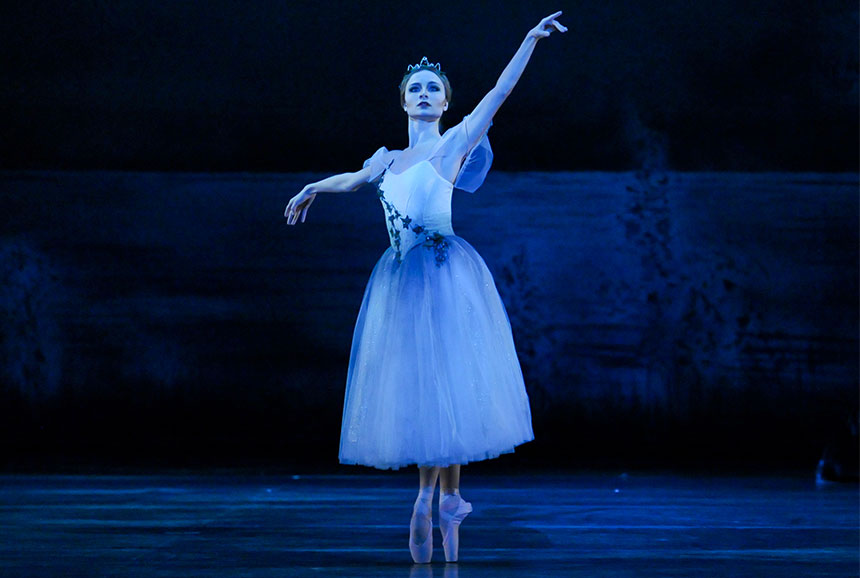
Q&A
How does it feel to be a soloist? How did you react and/or celebrate when you got the news?
“I don’t know yet! I know I’ll keep dancing just as hard and enjoying every day I get to do what I love. The day I found out I was promoted, I had arrived at work a little early. Once I knew, the first two people I ran in to were my best friend and my fiancé. I’ll never forget the big hugs I got from both of them!! I later celebrated with friends, getting my favorite pizza in Pittsburgh, at Pizza Taglio.”
How do you think you’ve grown as an artist since you first joined the company?
“I feel that a lot of growing as an artist comes with growing as a person. Every part I’ve performed I feel has taught me something new and helped me learn a little bit more about myself.”
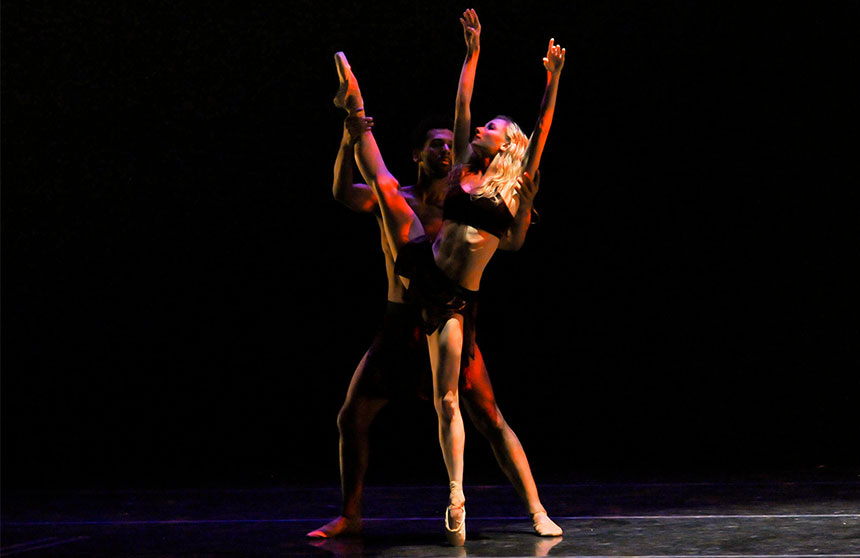
Could you describe the rush of performing, your connection with the audience and what it’s like being in the moment, performing, after so much preparation?
“Nothing compares to being on stage. My main goal once I get to the stage is to enjoy the moment and to share the joy I feel with the audience. When I’m out there I just try to relax in what I’m dancing and trust the preparation that got me there.”
Describe your most memorable role with PBT to date.
“In the Upper Room by Twyla Tharp was the first ballet I performed as a dancer with Pittsburgh Ballet Theatre. I can still remember how I felt during that show. It was incredibly special to me as it was my first time performing as a professional and it is a very difficult ballet to dance. Every time I hear the music by Phillip Glass it takes me back to that time in my life.”
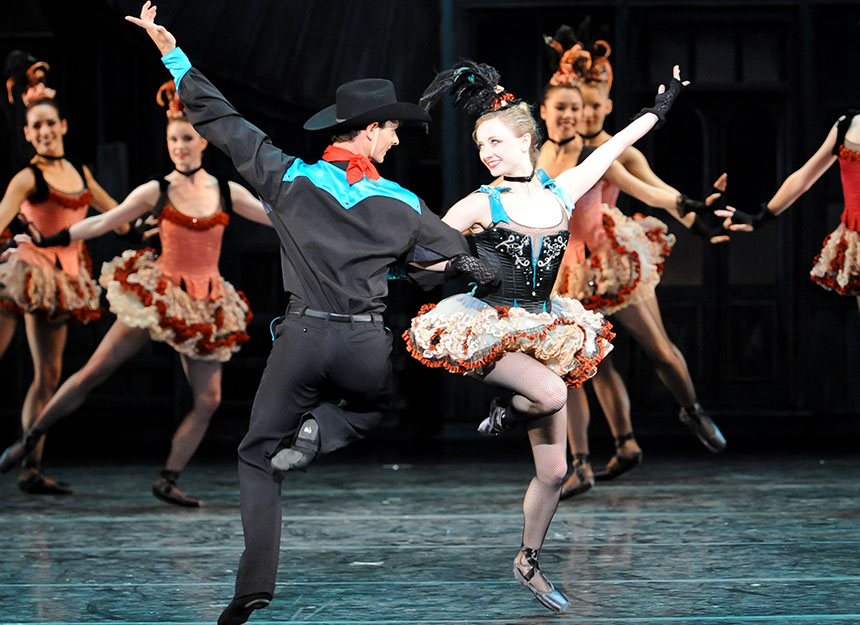
What qualities do you strive to bring to your dancing?
“Understanding a character has become more and more important to me. Dancing becomes even more enjoyable when you have a story behind the movement.”
Why ballet? What does it mean it you?
“I love that ballet is a balance of artistry and athleticism. It is truly a challenge that never dwindles! From the very first time I performed in The Nutcracker, I knew it was my dream to be a professional ballet dancer. I had no idea what I was getting myself into! I wouldn’t change a single choice I made though. I have loved every moment of the ride ballet has taken me on.”
What are you most excited about for next season?
“We have awesome programs scheduled for next season, but if I had to choose I’d say I’m looking forward to Dracula. I have never performed it, but the dancers that have are all very excited to perform it again!”
Artist Spotlight: Alejandro Diaz
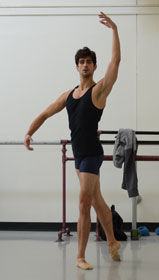 |
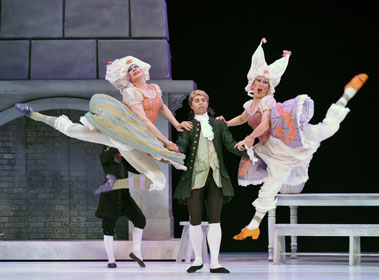 |
Above: Alejandro Diaz (in rehearsal) will transform into one of the stepsisters (right) for PBT’s production of Cinderella.
Cast as a stepsister in PBT’s season finale Cinderella, PBT dancer Alejandro Diaz has been spending time tapping into both his comedic and feminine sides in the studio. Find out what Diaz finds most challenging and hilarious about dancing “en travesti” in this comic gender role reversal in the Q&A below:
When you received the role, how did you begin creating and mentally prepared for this character?
When something tells you, well you’re going to play the part of a girl. Me being a 6’4 man, I say to myself, OK I really have to think about this, in terms of not just learning choreography, but how would a girl express excitement or anger or frustration…you want a giant range of emotions…I had a preconceived notion of the role. I have done this role before, so that actually helped me tremendously, and I’m so grateful that I get to do it again, because I get to actually hone in on a lot of the skills and the comedic timing that I got to work on at that time. Five years later, with other character roles under my belt, I’m approaching it in a much more methodical way.
What is so funny about the stepsisters?
I think the role in itself, the fact that it’s played by two men is hysterical. Every cast has a really wonderful story…I think the fact that Rob and I are getting to dance with Christine, her being so tiny and delicate and us being enormous also adds just a really great hysterical aspect to the story line. The other thing that’s funny is that the makeup is atrocious…but I think that’s all part of it, because we think we’re glamorous, we think were the most beautiful things that anyone has ever laid eyes upon, when in reality, when you take a look at us, you think…this is just awful. That’s also a major part of the role to believe that you’re beautiful knowing that you’re not. That’s what makes it really funny I think…
How do the outrageous costumes of the stepsisters help you activate the role?
The costumes are very gaudy, very big bold colors…I accessorize with the color orange. It’s a very bright color, I would say piercing on the eyes…my wig is awful. It’s like these two cones that stick straight up on the sides of my head…I am really something spectacular…You work on the faces a lot and the body movement and the body positioning, because again, I’m a man, and I’m playing the part of a woman…so I have to really think about it…when you put the costume on that’s another element that’s added and it helps you get in touch with that side. They’re very cartoonish, and I think that’s what’s really great, because you have to be really big, all of your movements have to be really big so the audience can read it.”
What are the key techniques you use to create and project the humor of your role to the audience?
I keep talking about timing and that’s a huge aspect of this. That is something that Mr. Orr has really impressed upon me, which was you can’t do everything so fast that nobody can see it….You have to give full weight and full value to each movement and it will be read much better. There are so many accents and musical cues that we have to follow…sometimes the music starts when we do a flick of the wrist and sometimes we have to bump hands at the end of a phrase, so it’s very precise. Prokofiev’s score is spectacular. I think that it’s one of the major driving forces for this ballet. Besides the beautiful scenery and costumes – and the choreography is very intricate – the music is just gorgeous. It has that seriousness to it and that idea of falling in love for the first time, and then it also has that comedic aspect, which you will hear in the music when you see the sisters dancing.
Is there a part of the stepsisters’ choreography that you find particularly funny?
There’s an entire section called the orange dance…these oranges are brought out on a pillow by the jester, and there’s this pas de trois that happens between the jester and the two sisters. To me, I think it’s hysterical because they feel almost entitled…no one else should get these oranges they belong to us. There are two oranges…so the whole scenario plays out that ultimately the two of them end up with the oranges and they scare everyone else off the stage. I think that’s one of the funniest parts.
As a stepsister, describe your interactions with Cinderella onstage.
For the most part, we think we are glamorous and we think that Cinderella is atrocious. We think she’s worthless…We just kind of throw her around…There are definitely a few signature phrases, we do a lot of pointing at her, we throw our hands in the air, we grab her dress…we mess up her hair…We have a whole scene where we’re just barraging (Cinderella and her father) with angry faces and pointing…and we do all these big grand jete lifts with her, and Rob tosses her into my arms. And again, that’s what makes it funny that here we are playing this part of women, and we’re just enormous.
What is the most challenging part of portraying, and dancing, as a woman?
I feel the biggest different in men and women are actually in their hands. The faces – we are going to the extreme when we’re doing the sisters. We’re making big, wild faces because we want that to be read. But the hands, that’s the hardest part. It’s getting a delicate look without looking like you’re trying too hard, and it’s a really fine line.
Which part of the Cinderella story resonates most with you?
I think that the story itself resonates with everyone because it’s this glimmer of hope of finding something beautiful or being discovered. That’s kind of what happens to Cinderella, and that’s what everyone wants in their life, is to be seen, to be noticed. I think that this ballet, this version, does a really good job of showing that.
As opposed to other full-length ballets, is there anything different about performing a fairy tale, and particularly Cinderella?
I think what’s great about performing this ballet is that all of the cards are on the table, and it’s your job to make it interesting. Because a fairy tale has this wonderful ending, so it’s kind of hard to mess that up. So what you have to do is keep it alive, and keep it interesting, and that’s the best part of performing a fairy tale ballet. It ends well, and you know it ends well, and the audience knows that, so it’s the journey that you have to take the audience through. That’s where the magic happens, and that’s where we get to show the audience that we’re great story tellers…Also Just the enormous amount of dancing…It’s a giant feast for dance lovers.
Now that Spring has finally arrived in Pittsburgh, are there any hobbies that you start up during the season?
I love doing yoga. When spring comes around I kind of get that excitement to go back….I also like to plant flowers and (vegetables). I take the time to do that. I’m fortunate to have a small yard. I like to plant vegetables…peppers, basil, tomatoes. (Cooking with them) is the best part.
Artist Spotlight: Company Pianist Yoland Collin
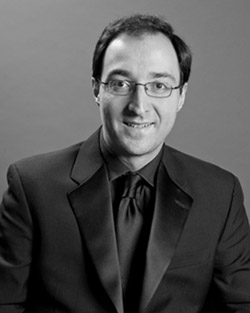
From studio rehearsals to the orchestra pit at the theatre, PBT Company Pianist Yoland Collin needs to understand the choreography nearly as intimately as the dancers do. And this month at the August Wilson Center, PBT’s Unspoken program will spotlight Collin’s virtusoic accompaniment in Drink to Me Only With Thine Eyes, a live piano solo for this Pittsburgh premiere. Here, Collin discusses the unique demands of accompanying dance.
Mark Morris is known for his “undeviating devotion to music.” As a pianist, how do you think the choreography reflects this music?
When you watch Drink To Me you quickly realize that it is based on what I would like to call “visual vignettes.” Each vignette consists of a distinctive step or a short series of steps that Mark Morris uses throughout the ballet in various combinations to create a complete work of art. I see a similitude between Piano Etudes and these vignettes in the sense that they are also distinctive technical or musical elements which are purposefully isolated to be worked on and conquered; “technical vignettes,” if you will, that are ultimately used in various combinations to create a more elaborate work. Also, and this might be pure coincidence, I noticed that there are 12 dancers dancing 12 Etudes accompanied by a piano which has 12 tones in a chromatic scale.
Mark Morris’ choreography ideally reflects the style and atmosphere of Virgil Thomson’s Etudes; nothing is overly aggressive or utterly expansive. The piece conveys a sense of (fake) simplicity with a dose of originality and a pinch of humor here and there.
Many of the piano etudes have witty titles that seem to suggest an underlying quirkiness to the music. How would you describe the mood and technique of this piece?
Each Etude (or Exercise) is actually titled after a very specific difficulty of piano technique. Oscillating Arms, Fingered Fifth, Broken Arpeggios, etc., are all part of the standard pianist lingo.
Virgil Thomson’s music always seems to have a certain quirkiness to it. He was a rather eclectic and definitely individualistic composer who always marched to his own drum. He seemed to be totally impervious to the trends and likes of his colleagues and contemporaries.
Balanchine’s Serenade & Tudors’ Jardin Aux Lilas – also on the Unspoken program – are also noted for their intense musicality. Are there any particular parts of these ballets that you note most as a musician?
Serenade is one of my favorite ballets because the genius and the beauty of Tchaikovsky’s music are thoroughly matched by Balanchine’s amazing choreography. It is one of those ballets that is as beautiful and relevant today as it was the day is was created.
Lilac Garden is choreographed using Ernest Chausson’s marvelously expressive Poème op.28 which is one of the pillars of the classical violin repertory. I look forward to seeing the piece more and more as I am new to Tudor’s style. No doubt this is a masterpiece and the PBT dancers do an amazing job at conveying all the wide range of emotions that appear in this 17 min story ballet.
Describe your rehearsal process to prepare for a live piano solo like this?
I start working on a piece several months before the dancers. I like to come in the studio well prepared so no time is wasted on me trying to figure out the music while they learn the steps. Once the rehearsals at PBT have started, I keep track in my score of key steps and/or sections. This allows us to stop and start more easily. Throughout the learning process, I research and familiarize myself with the best way to interpret the piece so the dancers can feel comfortable and always look their best. All of this is done while respecting the vision of the choreographer and the integrity of the music. I also enjoy reading about the composer and the choreographer, and watch or listen to some of their other works. It gives me a better perspective on the ballet we are working on.
In addition to accompanying many PBT performances, you also play the piano every day for the company’s two-hour ballet class. Describe the parameters that you use to determine the music you’ll play each morning.
A ballet class follows a certain structure. Exercises (or combinations as they are called in ballet) are done in a certain order to allow the dancers to progressively warm up their bodies while working on their technique. Each combination varies in length and tempo, but is always done in phrases of 8 counts with a very clear beat. During class, while the teacher demonstrates an exercise, it is my job to find on-the-spot music that will incorporate all of these elements of rhythm, tempo and phrasing. In order to avoid monotony, I like to include different styles of music to my classes by playing show tunes, jazz, popular songs, etc. Being able to improvise is also a big savior when the right music for a combination is not at hand.
What are some of the unique challenges and rewards of accompanying dance? Do you alter or adapt your playing in any way?
I like to think that playing for dance is like playing for chamber music. There is a certain symbiosis that has to take place between all of the players in order to create a pleasant and successful experience. After all, dancers’ bodies are their instruments.
It is most rewarding to me when I feel that we are all on the same page; that the music and the dance all work hand in hand. Nobody is pushing or dragging anyone. It is all flowing naturally and in harmony.
I also try to be very attentive to the different types of dancers we have in the Company: some move faster than others, some jump higher than others, and some are more expressive than others. Those differences all call for constant and minute adjustments in my playing.
Outside of the ballet, what are your favorite composers or pieces to choose for recreational playing?
I don’t have much time for recreational playing unfortunately. Rachmaninoff’s music remains my all-time favorite because it has all of the elements that I like in music: structure, depth and range of emotions, virtuosity and, of course, sheer genius!
Artist Spotlight: Choreographer Jorden Morris
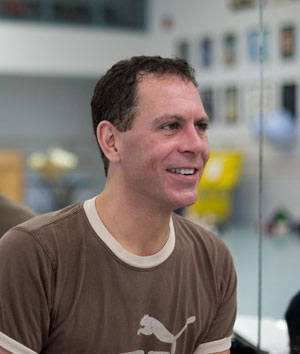
Moulin Rouge® – The Ballet choreographer Jorden Morris shares behind-the-scenes insights on bringing the famed cabaret to the Benedum Center stage.
How did you conceive of the underlying story and style of this ballet? What are the different sources you looked to for inspiration?
The story came from the idea that I wanted to explore two young people of very different backgrounds thrown together in the cauldron of Paris at the time – I wondered how these two characters would develop and ultimately succeed or fail in their attempt to be together. I took inspiration from several sources, John Huston’s film, Jean Renoir’s film, Pierre la Mure’s book as well as the fashion, art and music of the time/era.
You received the very exclusive endorsement of the Moulin Rouge in Paris to create this ballet. What are some of the interesting perspectives you gained from working so closely with this famous cabaret?
It was a wonderful and amazing educational experience to work with the actual people from the Moulin Rouge® in Paris – I learned a lot about the history of the cabaret and in was very inspiring and rewarding to be given the responsibility and endorsement to create the work.
How did you draw from cultural and artistic landscape of turn-of-the-century Paris to build the characters – like Nathalie, Matthew and Talouse-Lautrec – and their stories?
Nathalie, who begins as a launderette was an actual profession in Paris at the time, many artists like Matthew migrated to Paris at the time to be involved and influenced by the Belle Epoque – Toulouse, La Gouloue and Mome Fromage were all real people from that era.
For the character of Toulouse-Lautrec, describe how you translated his real-life history to a character in this ballet and how you choreographed for his character.
Many people ask me about the character of Toulouse being portrayed by a dancer – he was a crippled individual, with a genius mind. When choreographing the dance for Toulouse, I wanted the audience to see the amazing and beautiful things going on in his mind – which is translated through dance. It would have been easy to make his choreography twisted and deformed, but then we would never see the beauty behind what was in his mind.
How does classical ballet movement translate to the cancan, tango and overall movement vocabulary of Moulin Rouge® – The Ballet?
The Cancan had to mixed with classical ballet, which took a lot of trial and error with cross pollinating the movements. The tango sections are very close to traditional Latin tango with a few balletic twists thrown in – the rest of the movement really came from the musical score and what the composers dictated with the selections.
Moulin Rouge® – The Ballet has toured consistently since its 2009 premiere. How would you describe PBT’s interpretation of the production; do you tweak any parts of the show based on the artists you’re working with?
I always do a certain amount of manipulation and collaboration with a new cast of artists – I believe that no two dancers should dance any role exactly the same way – there must be an individual “fingerprint” for each artist. Sometimes those changes are very minute, sometimes quite dramatic. This production has some new changes overall never seen before, and some of the changes are to give the new cast members an identity they can work with and expand the more they perform it.
In the spirit of the Moulin Rouge of Paris, Moulin Rouge® is a registered trademark of Moulin Rouge S.A.
Artist Spotlight: Nicholas Coppula
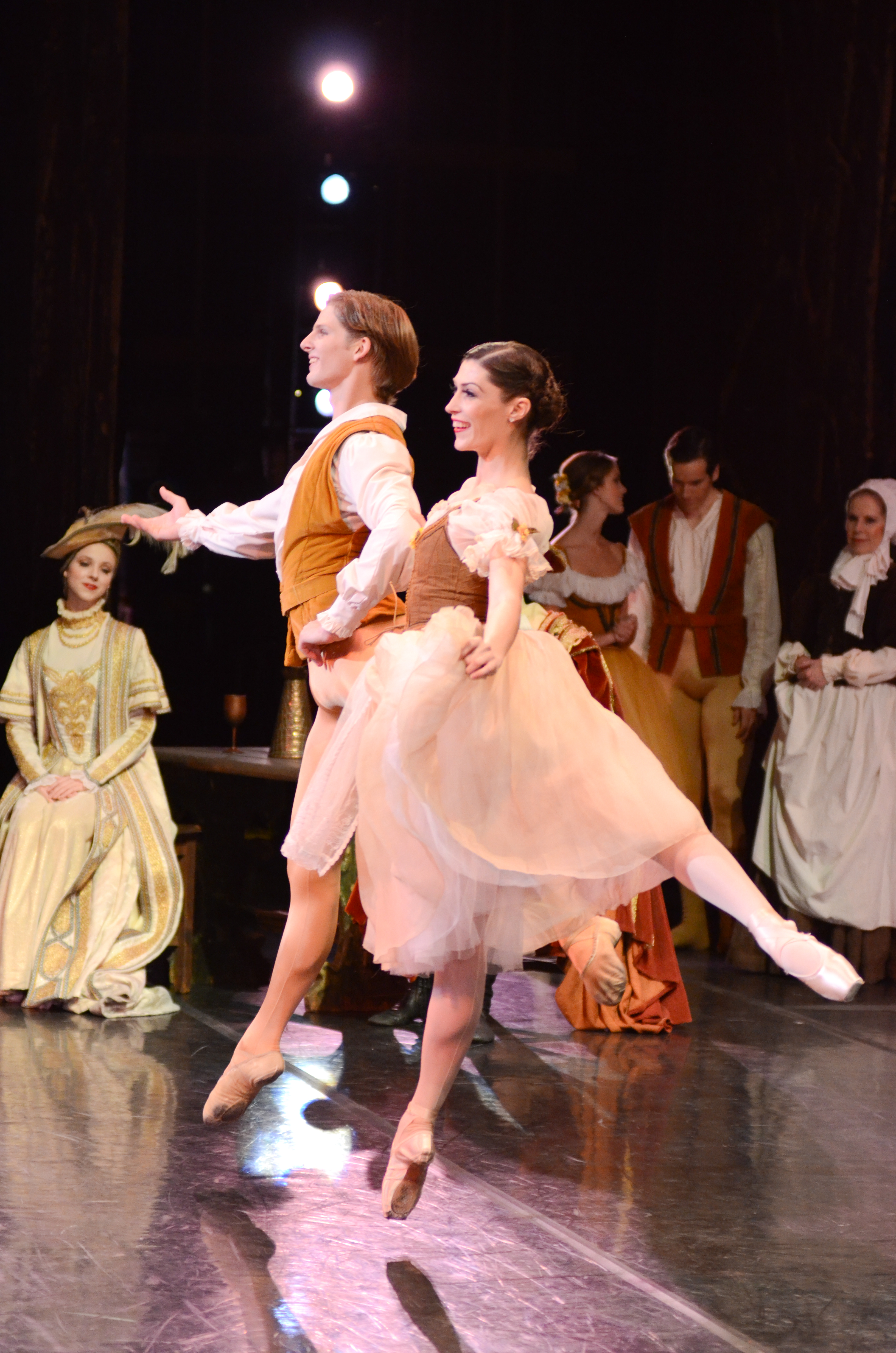
When he’s not onstage or in the studio, PBT dancer Nicholas Coppula can often be found capturing the movement on camera as a photographer in his free time. Here Nicholas shares his perspective from both the stage and behind the camera as he reflects on some of his favorite moments and photos from 2012.
Most Memorable PBT Moments of 2012: Performing John Neumeier’s A Streetcar Named Desire (In its Pittsburgh premiere, PBT became the first U.S. company to perform the work), PBT’s 2012 Israel Tour (The company’s first overseas tour in nearly 20 years) and performing Giselle in October 2012.
Favorite Role of 2012: The Peasant Pas de Deux from Giselle
You just spent December dancing in 20 performances of The Nutcracker. What do you plan to do with your break from the stage during January?
I am going to catch up on some projects. The month of December always seems to disappear because of Nutcracker, and I find that I mostly want to sit on the couch and relax between performances. I am working on some small home improvement projects. I also have some photography that I would like to browse through and edit.
Do you find any similarities between your passion for dance and your passion for photography?
It’s more than just similarities between the two. They feed off of each other and help me fill in the slow times as well. When I look through my photographs it reminds me why I am a dancer. And when I am dancing I always see photos. Some shows I am really busy and others leave me with more down time. I keep myself occupied with the photography.
What are you most looking forward to accomplishing with PBT in 2013?
I would like to keep working hard and moving forward in my career.
In your spare time, you design lighting and contribute to the production team for PBT School performances. What interests you most about some of the different production aspects of dance?
I have always been interested in the technical side of the theatre. When I went to shows as a kid I spent half of the show trying to figure out the lighting or how they made something work. I have always been a problem solver as well. Working with the PBT School allows me to apply these things to an art form that I love and understand intimately.
As a photographer in your spare time, which images best illustrate PBT’s 2012 for you?
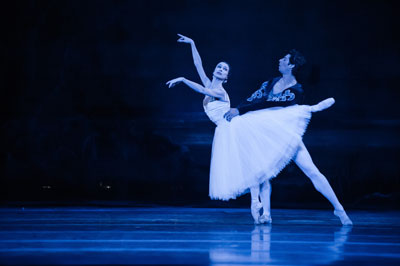 |
 |
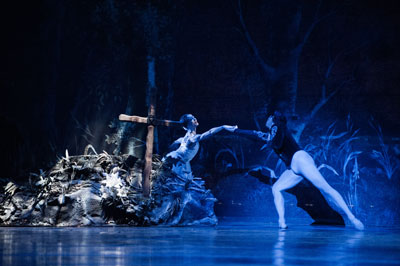 |
From top to bottom: PBT’s Giselle with dancers Christine Schwaner & Alexandre Silva; Israel Tour 2012 – PBT dancers wait for the bus to their first day of rehearsals; PBT’s Giselle with dancers Christine Schwaner & Alexandre Silva. Photos by Nicholas Coppula
Artist Spotlight: Q&A with PBT’s Gabrielle Thurlow
From the Sugarplum Fairy to the Snow Queen, PBT dancer Gabrielle Thurlow will perform as many as 10 different roles throughout the The Nutcracker‘s 20 performance run. Here, Gabrielle discusses what’s like to prepare for so many different characters.
For this year’s run of The Nutcracker, you could be responsible for preparing for as many as 10 roles. Do you have any strategies for focusing on each one individually and preparing fully for each part?
I try to focus on one role at a time. For example, I spend one rehearsal hour working on one specific role. I then switch gears, and target another role for the next hour. I continue in this manner throughout the week until I have worked on each one separately. I may spend more time on certain roles that are more challenging for me, but I make sure to get to them all. When performances arrive, I focus on the roles that I am going to put on stage that day.
Which character do you have the most fun performing, and why? Which is the most rewarding?
The character that I have the most fun performing is Chinese because it’s so whimsical. I can’t help but smile when jumping and turning around with the ribbons. The character that I find most rewarding is Sugar plum fairy because it is so challenging. It is technically and artistically difficult, and it is also quite a workout for my stamina. I spend many hours working to make it the best I possibly can, and it feels good to finally get on stage and perform.
Over the course of 20 performances throughout December, do you find yourself refining or experimenting with your roles in any way?
Yes, once I get comfortable on stage, I feel like I can take certain risks within the choreography because I have several opportunities to perform the same role. I especially like to experiment with party scene. I like to create stories for the party guests that I portray, and each time I am on stage, their stories change.
Do you approach your rehearsals or studio time different during The Nutcracker season? Do you have any strategies to relax, keep your focus and clear your head as you juggle these roles?
I approach the Nutcracker season slightly different than I would during the rest of the season. I emphasize a lot more on stretching my muscles, as they tend to get tighter and more fatigued with such a heavy load of dancing. However, I still approach the actual rehearsals the same as I normally would throughout the season. Also, I continue to rely on Pilates to help me stay strong and properly aligned. Staying focused is not difficult for me because I know whatever I am working on is going to be put on stage, and I want to show my best possible work. To relax, I enjoy spending time with my dog (Winston, a mini schnauzer). He keeps things simple, and can always make me smile.
As someone with experience dancing multiple roles in The Nutcracker, how do you think this dynamic and unique casting benefits the overall production from the both the dancer and audience perspective?
I think the different casting helps keep the dancers inspired. Personally, I enjoy the unique casting because it gives me opportunities that I might not normally get as a corps member. I take this chance to grow as much as possible, both technically, as well as artistically. I think the dynamic casting also benefits the audience because they get an opportunity to see different dancers doing all different kinds of roles. It allows them to see the dancers’ versatility, while keeping the performances interesting.
Do you usually have any particular special guests or family members attend the performance?
Yes, my parents always come to see multiple shows. They are very supportive of my career, and I love knowing they are there for me out in the audience.
What are some of your favorite holiday traditions outside The Nutcracker?
I love going home (Buffalo, NY) and spending time with my family. We always decorate our tree together, and make a big brunch on Christmas morning, complete with homemade cinnamon rolls.
Artist Spotlight: Q&A with PBT’s Stephen Hadala

Beyond dancing nearly every male role in The Nutcracker, PBT’s Stephen Hadala holds the distinction of being one of the only company members to have performed in all 11 years of Artistic Director Terrence S. Orr’s version of this timeless holiday classic. Here, he shares some of his favorite Nutcracker memories:
Stephen, you hold the distinction of being one of the only dancers to have performed in all 11 seasons of Terrence S. Orr’s The Nutcracker. What was it like to be part of the first cast to premiere the new production? What was the energy like at the studios and in the theatre?
“Excitement is the key word for this. Just whenever you create a ballet from the ground up there’s always a certain level of excitement. The way Terrence S. Orr approached it, he was really interested in input from the dancers…So it was really building all these characters. Of course opening night came along…it was such a sense of unity, everywhere from the dancers and Terry and the costumiers and the backstage crew, everyone just working together to put on this new production at the Benedum. It was exciting for the audience because it was something brand-new, created for them. (Terrence S. Orr) used the names of people at the party…the McTavish, the Heinz, the Kaufmans….all these names that everyone in Pittsburgh knows and can relate to. I think everyone had that feeling that it was something special for them, a new holiday tradition that they could welcome and be excited about every Christmas.”
What is your favorite part of PBT’s version of The Nutcracker?
“Hands down it’s Drosselmeyer. In other versions, Drosselmeyer kind of appears at the party and does a couple of tricks…In Terrence S. Orr’s The Nutcracker, he’s the storyteller, the thread that sews everything together and makes the story complete, which I like because you get to go with him on the journey from the beginning all the way to the end. There are so many facets to his character. It’s a challenging part, because you are telling the story and introducing the nephew to Marie and also entertaining at the party. It’s a complex character. I’ve been fortunate to do it every year, all 11 years. Every year this character gets deeper and deeper, it’s just a fun one to do.”
Have you developed any personal Nutcracker rituals or traditions to get yourself in the spirit of the show?
“I start with the different roles, more so the character roles…I always start to think about what I did last year and any ideas that I could introduce to the part to make it more interesting. But before the show, if I’m doing Drosselmeyer, I like to go and set up every prop, I lay them out the same way on the prop cart every time, check and double check the props several times. There’s a magic trick with a purple tablecloth that we use. The butler’s in charge of handling it but I like to personally fold it myself and make sure that it’s placed in the same way. Before every show and before every rehearsal I make sure I personally touch and put into place my props. Also, I guess it’s kind of a calming thing before the show starts.”
You’re known for your onstage personality and character roles with PBT. Which Nutcracker character do you have the most fun portraying?
“I think Drosselmeyer is my favorite, because it’s something that I get to do every year. I’m really interested in trying to add a lot of realism to the character…trying to become that person. That’s why Drosselmeyer’s my favorite, because I do get to every year kind of enhance him and add to him.I really enjoy the Arabian pas de deux and the lead Russian. The Russian music is so iconic. When you think of Christmas and Nutcracker, you tend to think about the Russian music. It’s a crowd pleaser.”
What is the most parts you’ve ever danced in one run of PBT’s The Nutcracker?
“I think in one run I’ve done Drosselmeyer, the general, grandfather, the pirate doll, Dr. Stahlbaum, Rat King, Snow King, Spanish, Chinese, Russian, Arabian and Cavalier. I think over the 11 years I’ve performed every male spot except for Mr. McTavish and the Harlequin doll.”
Describe the technical challenge of preparing for so many diverse roles.
“I think it gets easier every year once you’ve done every role. It is a challenge. The hard part is looking at each role and kind of figuring out how you have to play it…I think that’s a lot with the character roles just figuring out how to do the part justice without overplaying it or underplaying it. Each divertissement in the second act has a character aspect to it, you know the Russian obviously has to have a lot of bravado and excitement…Chinese you’re dancing with two ribbons with a giant dragon behind you…That’s the hard part figuring out for each role how you’re going to play or dance it.”
When you’re not at the theatre, what other holiday traditions do you enjoy with your family?
“We usually start with Thanksgiving. Usually, my wife and I have thanksgiving dinner at home just the two of us here in Pittsburgh. Both of our families are in Michigan. We usually like to spend that long weekend together. Christmas Eve and Christmas Day, my wife and I love to cook, so we usually do a fondue on Christmas Eve and appetizers and dessert and then on Christmas Day make some sort of Christmas feast. As much as we love to cook, we also love to eat…(My wife) usually comes to The Nutcracker on opening night. I’ve been fortunate to do Drosselmeyer on opening night a lot. She really enjoys seeing me in that role, but she also enjoys the excitement of opening night and the whole experience of that first show. She usually likes to come again toward the end…because at the end it starts getting even more creative. It’s a different show every time. We’re going to try to bring (our 9-month-old son Ian) this year, at least to come back stage and see everything.”
Artist Spotlight: Q&A with Maestro Charles Barker
Newly reappointed for a second three-year term with PBT, Music Director Charles Barker takes the baton for his fourth season at the 2012-2013 season opener, Giselle with the live Orchestra. Here, Barker shares his perspective from the orchestra pit on Giselle, conducting for dance and more.
As you begin your fourth season with PBT, what do you look forward to most for the season?
Performing is its own reward. Being part of a large group of people all working their respective jobs in order to create a spectacle is a thrilling experience. At PBT it seems to happen every time so I have that to look forward to. It is always great to work with the PBT dancers. They are quick, musical, artistic and, perhaps best of all, very gracious to work with. The PBT orchestra is excellent.
The season premiere, Giselle, was the first ballet with an original score composed for the production. How do Adam’s score and the live orchestra contribute to set the scene and develop characters in this ballet?
My wife and I (she was a principal dancer with the Australian Ballet) once discussed the last 5 minutes of Act 1 of Giselle, the “mad scene”, for 3 hours. We went over every note and every step and talked about what they meant and how best to make the emotion and energy of the section come across to the audience. The only way for this to happen is to have live music. The dancer must respond to what they are hearing, if they perform steps by rote there is no art; the conductor must respond to what he sees and how the action is progressing, if he merely plays the music without regard for what is happening on stage there is no art.
How does your rehearsal and preparation differ for a ballet production compared to other performance settings?
One major difference between symphonic preparation and theater preparation is that the music must be ready and at performance level by the dress rehearsal. The dancers are expecting everything from the pit to be there and right! The orchestra’s dress rehearsal is the final orchestra-alone rehearsal.
What are the unique rewards and challenges of conducting live for ballet dancers?
The first paragraph above says it: Creating a theatrical event working with many others is both a challenge and reward.
Looking ahead to PBT’s Season finale Cinderella, Prokofiev’s score is considered one of the most brilliant in ballet. What do you think earns it this distinction; what makes it special to perform?
Prokoviev is still underrated. I believe his music is on a par with Mozart. There is not a note out of place or any extra gratuitous markings. The orchestration is exacting and the timbres it creates are some of the most amazing in all of music. Specifically in Cinderella, the final pas de deux (in D-flat major!) is perhaps the most beautiful piece of music I’ve ever heard.
Artist Spotlight: Soloist Amanda Cochrane
From Peter Pan’s sprightly Tinker Bell to The Nutcracker’s adventurous Marie, Amanda Cochrane has breathed life into a variety of PBT feature roles with grace and personality that can be felt from the audience. With many new roles ahead, this fall will mark not only Amanda’s fourth season with PBT, but will launch her career as the company’s newest soloist.
Beginning at age 3 with dance classes in Spokane, Washington, Amanda went on to accrue early onstage experience, dancing the role of a page in Western Ballet’s The Sleeping Beauty and a variety of children’s parts in Alberta Ballet’s The Nutcracker. By age 13, after completing a six-week summer program in Poughkeepsie, NY, Amanda had set her sights toward a professional ballet career.
“I got to see a lot of older dancers performing while I was there, and it really inspired me,” Amanda said.
Once Amanda decided that she was destined to be a professional dancer, she dedicated her time to training to make her dream come true. Following years of training at the PBT School Graduate Program and summer programs at other ballet companies, the transition from ballet student to professional came as a somewhat surreal experience.
“These people inspired me on a daily basis,” Amanda said of her first experience dancing onstage with PBT company dancers as a PBT School student. “It was incredible.”
As a PBT School student, Amanda was able to interact with the company she would later join as a professional dancer. “Everyone was almost like a family, and I wanted to be part of that. The dancers really seemed to work as a team, and they all supported one another.”
Since joining the company in 2009, Amanda continues to focus on growing and honing her dancing, character development and artistry.
“I feel like a lot of my inspiration in dancing comes from the music,” she said, using the example of The Nutcracker battle scene. “That fear that you can feel for Marie, I feel very in the moment during that scene.
Among her other memorable roles are dancing her first major pas de deux on the Benedum stage as the Sugar Plum Fairy in PBT’s The Nutcracker as well as Tinkerbell in Jorden Morris’ Peter Pan, which gave her the opportunity to let loose and have fun with the character.
“Generally, you can feel the atmosphere that the audience is giving off,” she said, adding that a burst of applause during a difficult variation, for example, adds to the energy onstage. “That gives me a lot of motivation to keep my stamina up.”
Nineteen years after taking her first ballet class, Amanda is poised to begin her first season as a PBT soloist. She said her season highlights will include performing some of her favorite story ballets like Cinderella and The Nutcracker as well as the opportunity to work again with Jorden Morris during Moulin Rouge® – The Ballet.
“It’s all very exciting,” she said of her new role with PBT. “I do think it adds to my motivation…I’m always working on (artistry), what makes every piece unique.”
Q&A with New Principal Christine Schwaner
Christine Schwaner returns for her seventh season with the company as PBT’s newest principal dancer. A native of Brazil, Christine has performed a variety of feature roles in PBT productions, including Swanilda in Coppélia, Svetlana in Dracula and the Lilac Fairy in Sleeping Beauty. As Christine gets ready to take the stage for her first season as a PBT principal, read more about the inspiration behind her ballet career:
What is your favorite role and why?
It is hard for me to pick one. I love all of them! Each and every one of the roles brings us a new challenge, technically and artistically!
What inspired you to start dancing and eventually pursue ballet as a career?
I used to watch my older sister Anne dancing, so my mom, Lourdes decided to put me in the same ballet class. And ballet is like this, once you fall in love with this beautiful art form, you are “hooked” for good!
Is there a ballerina or dancer that you consider your primary role model or inspiration?
I never get tired of learning. It is a non-stop process in striving to grow, to innovate, to reinvent! My biggest inspiration has always been my teacher in Brazil, Maria Clara Sales, from whom I never ever stop learning, even if I can just take one class a year with her on my vacation in Brazil. I absolutely learn from all of my colleagues – dancers and teachers – every day! The diversity of our company is just so rich and full of flavors that I believe it makes us special!
When you aren’t dancing,what is your favorite thing to do in Pittsburgh?
My favorite thing to do when I’m not dancing is walking at the park, with my husband and dog on a beautiful sunny day! Can’t get much better than that!
